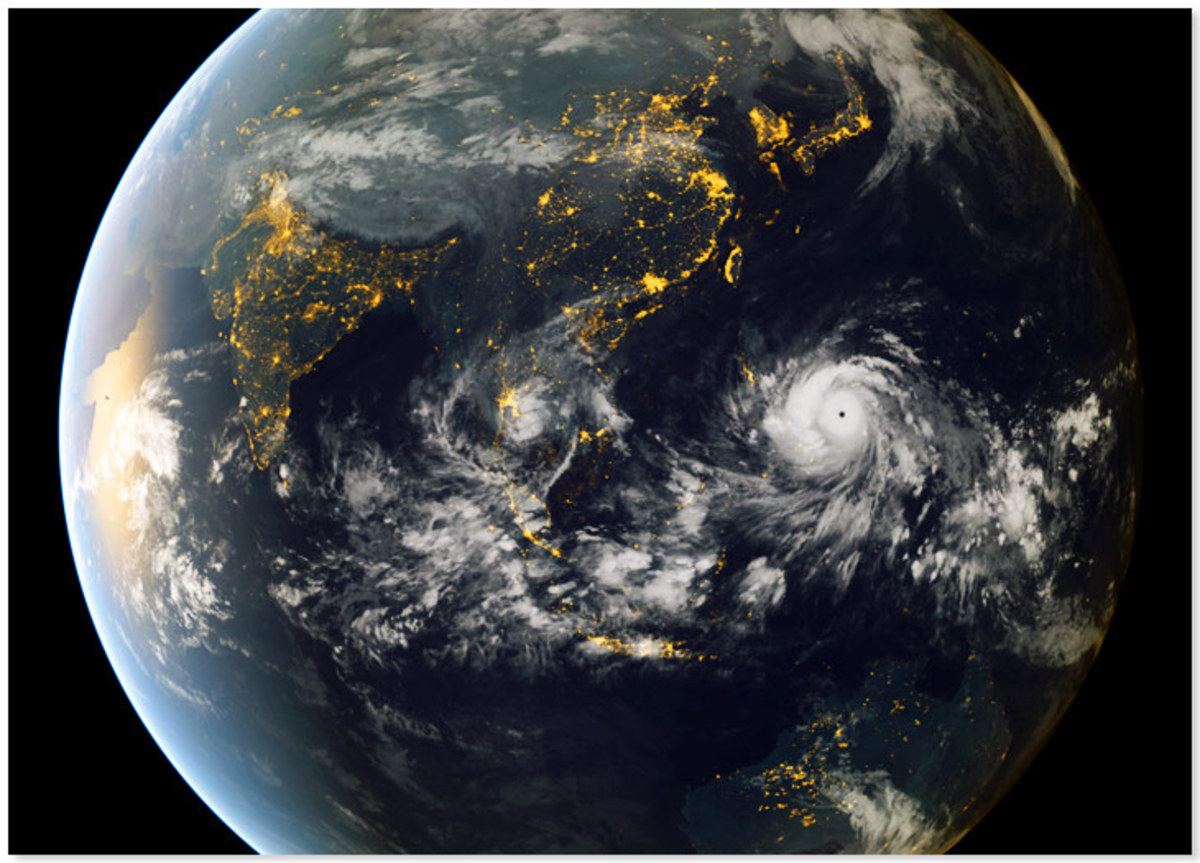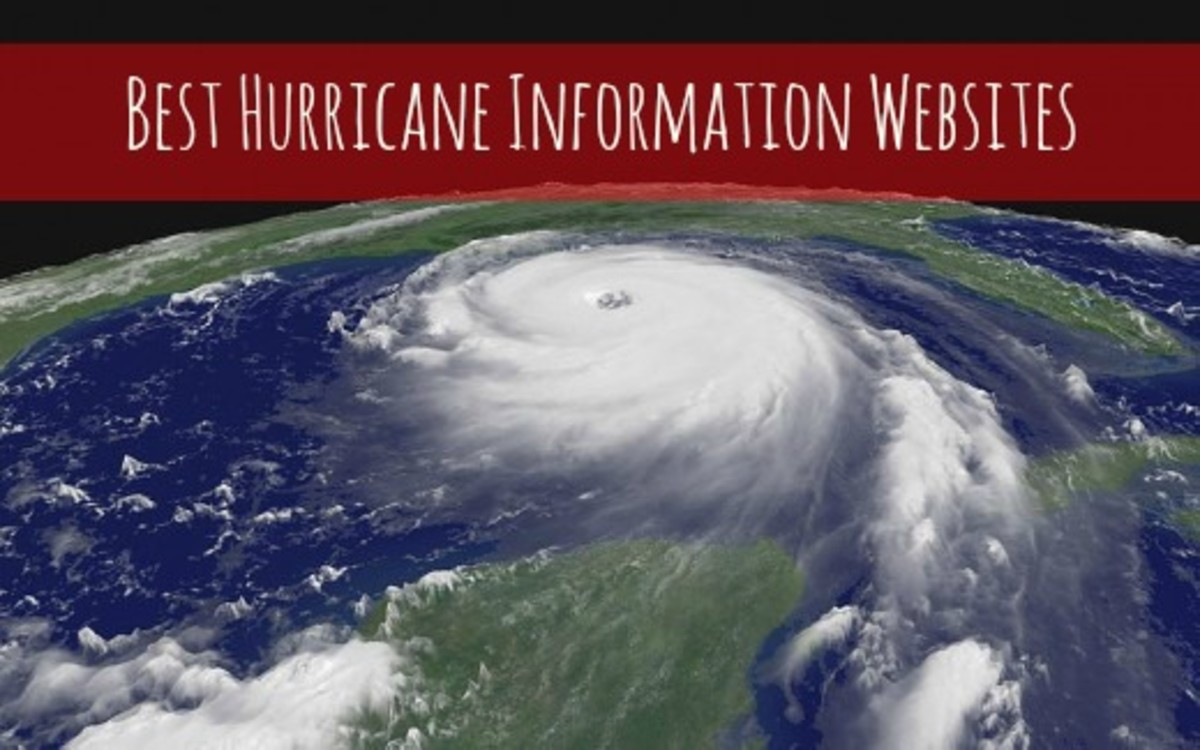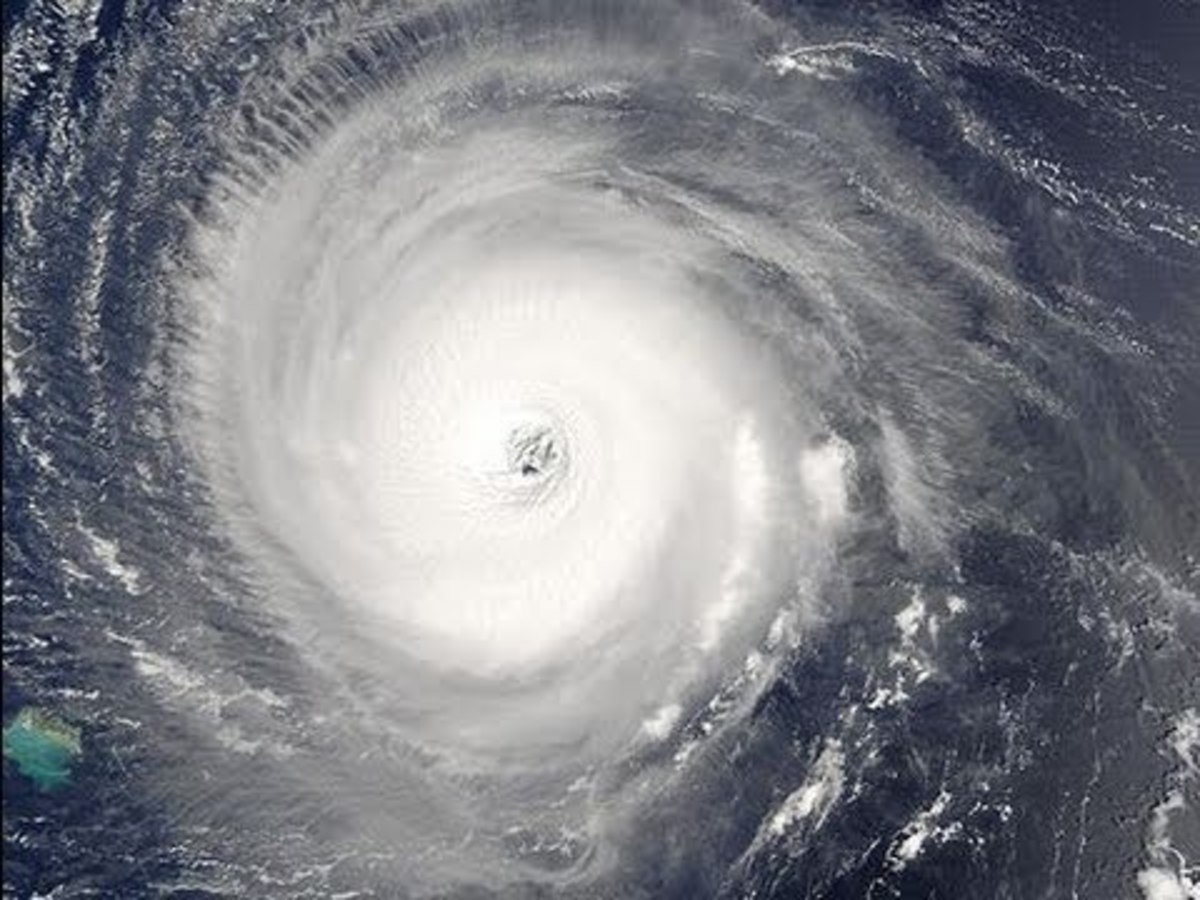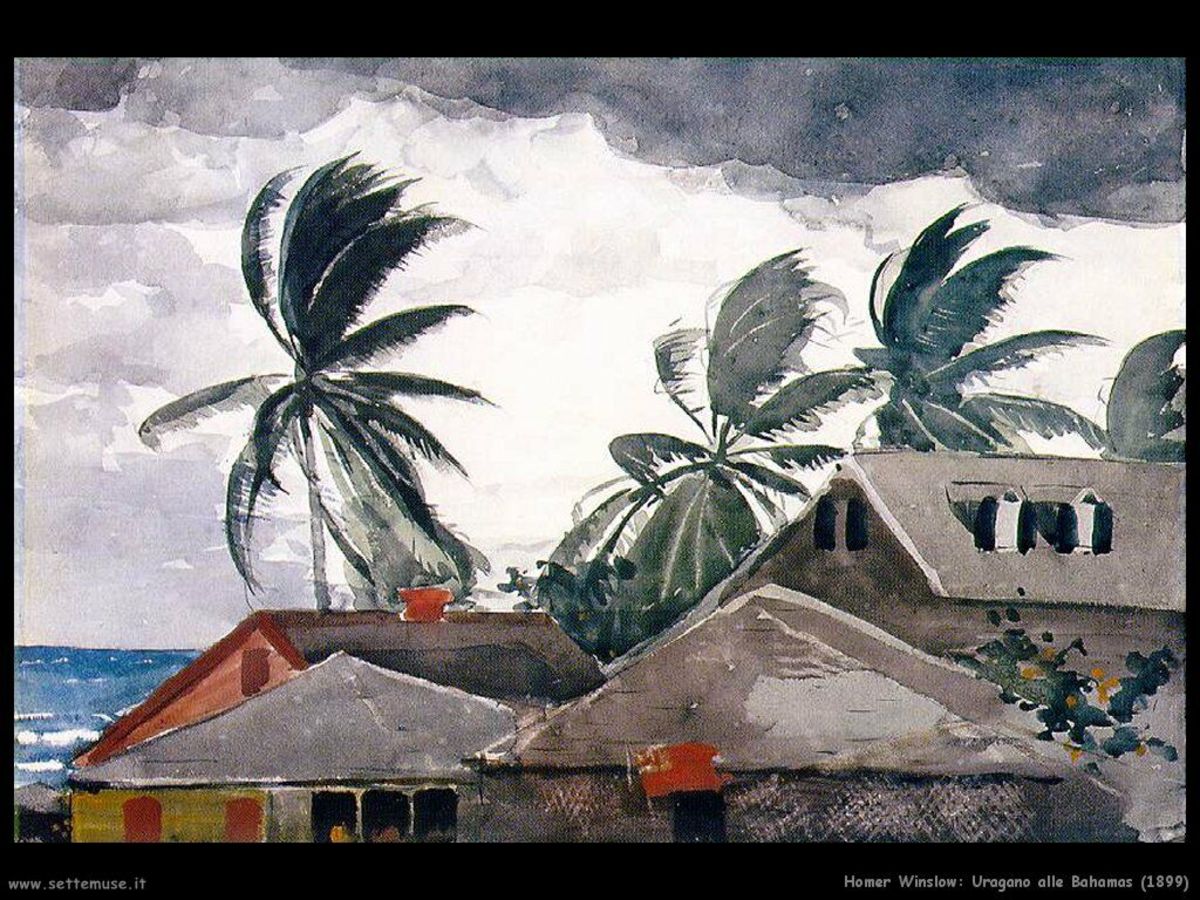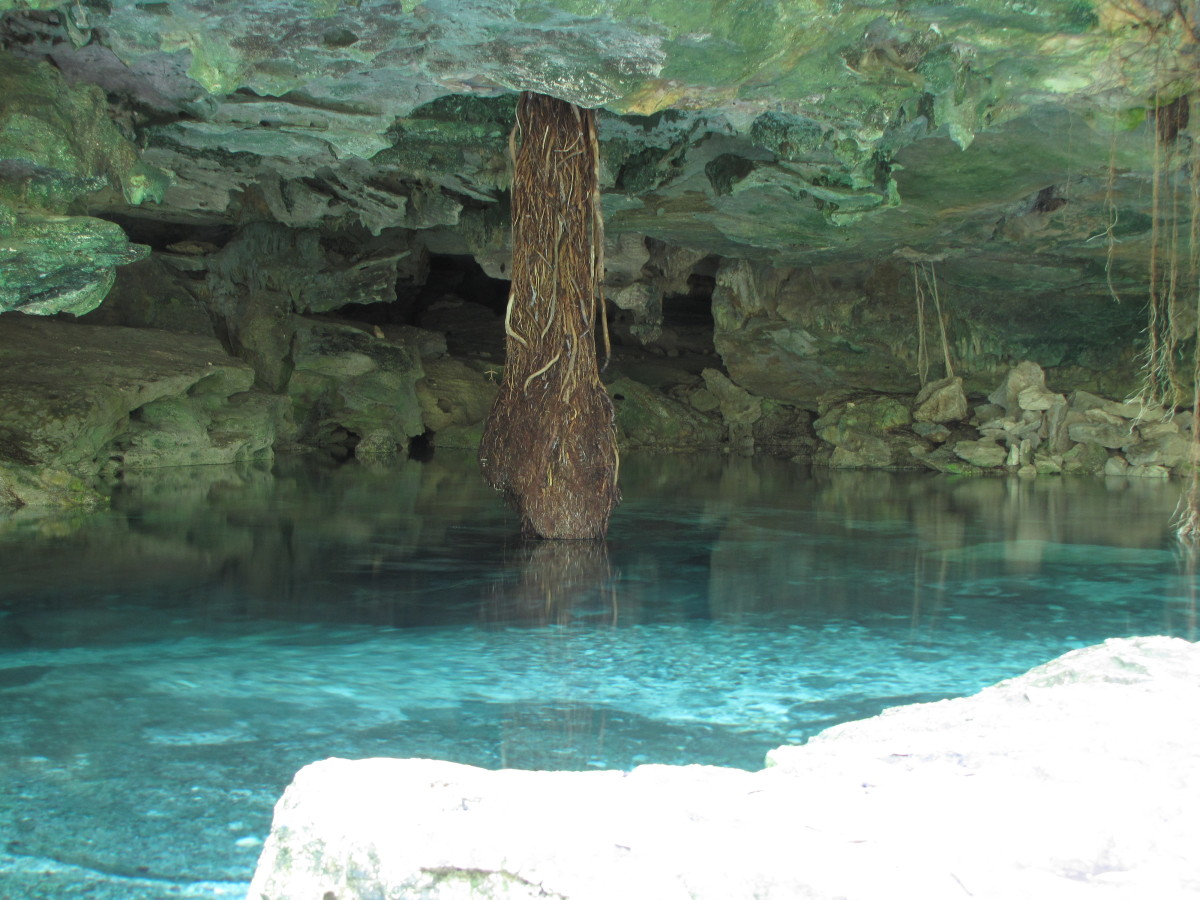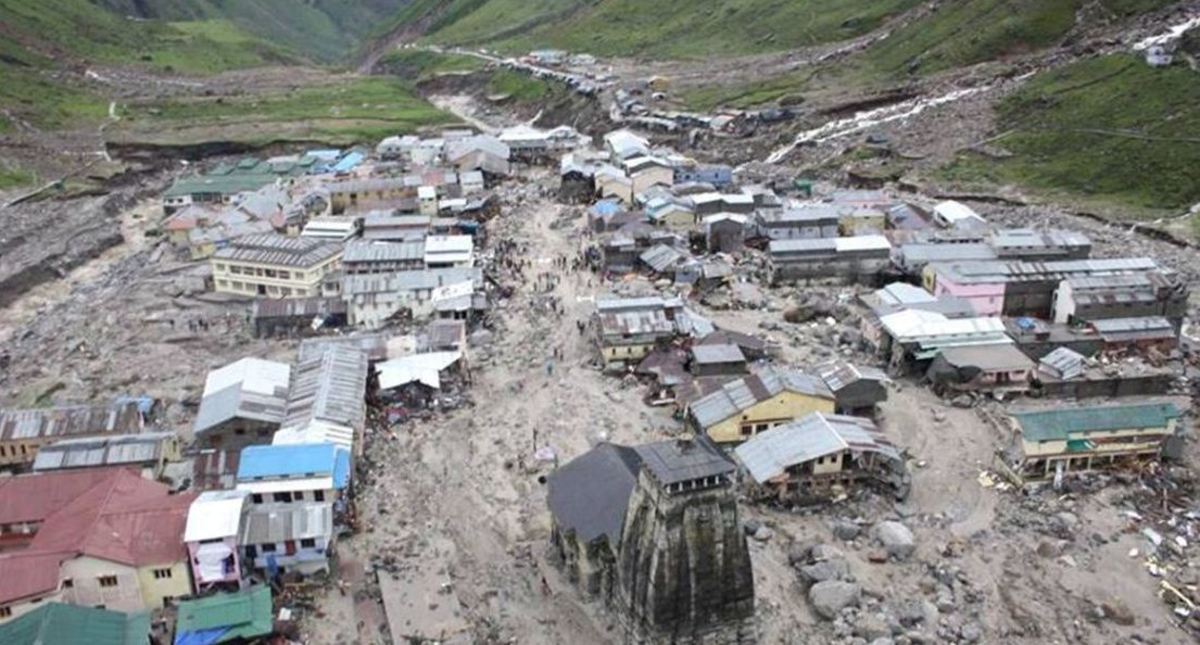Hurricane Andrew
Number 13 in the World's Worst Hurricanes, 1992’s Hurricane Andrew is considered to be the second most powerful and the last of three category 5 hurricanes experienced by the US during the 20th Century, after the Labor Day Hurricane of 1935 and Hurricane Camille in 1969.
Hurricane Andrew struck the north western Bahamas, as well as southern Florida and south west Louisiana. Hurricane Andrew is, as of the time of this writing, the second costliest hurricane ever to make landfall in the US, coming only after Hurricane Katrina.
Hurricane Preparation for Hurricane Andrew
Prior to the impact made on the Bahamas, predictions were made of ten to fourteen foot hurricane storm surges. Evacuations were ordered and, at 5PM local time, residents throughout the Bahamas and Florida were warned to take precautions and that by 11PM, these precautions should be completed.
One thousand five hundred National Guard troops were deployed to parts of Florida in order to prevent looting and civil unrest, and sandbag walls were built in the SouthBellTelephoneBuilding in New Orleans, as well as in the French Quarter.
Floodgates were closed throughout the New Orleans Levees, and sandbags for the public actually ran out due to the protection of major areas. All planes into and out of New Orleans were, of course, immediately cancelled.
Hurricane Andrew Satellite Image
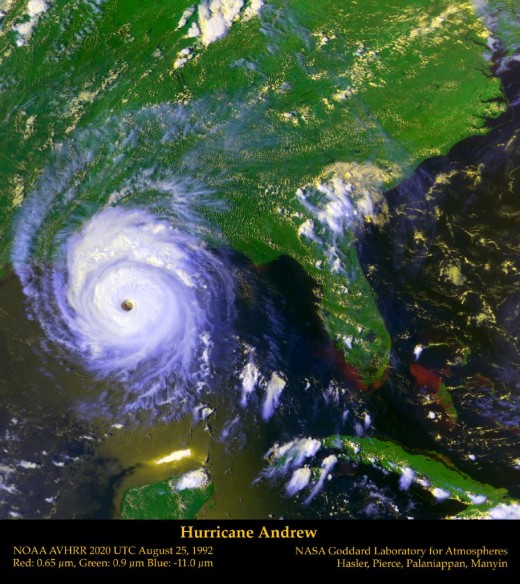
Hurricane Andrew damage
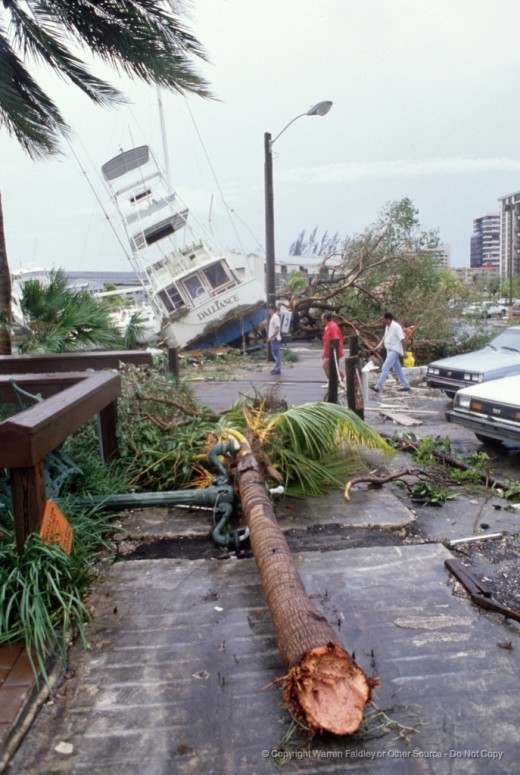
Hurricane Tracking for Hurricane Andrew
Hurricane Andrew began as a tropical wave moving off of the coast of Africa on the 14th of August, tracking quickly to the west. On the 15th, meteorologists began classifying the system with the “Dvorak technique”. The thunderstorms became more concentrated, and the storm became a Tropical Depression Three late on the 16th of August, about one thousand six hundred thirty miles east by southeast of Barbados.
The depression then moved west by northwest at about twenty miles per hour, and the storm intensified to Tropical Storm Andrew at about noon UTC on the seventeenth of August. Early on the eighteenth, the storm continued west at a speed of fifty miles per hour, with the thunderstorms decreasing.
The eye of the hurricane storm formed on August twenty second as the storm became a hurricane just six hundred fifty miles east by south east of Nassau in the Bahamas. Six hours later, the hurricane storm was predicted to make a landfall around Jupiter Florida, and began rapidly intensifying that day. On the twenty third, the hurricane storm became a category 5 hurricane.
The storm crossed over the Gulf Stream in the Straits of Florida, and rapidly intensified before striking Elliott Key, and continued to strengthen just after landfall.
Continuing to Homestead, just south of Miami, the hurricane now had winds of one hundred fifty miles per hour. Hurricane Andrew began weakening as it went further inland, and finally emerged in the Gulf of Mexico. It made its final landfall in a sparsely populated area of Louisiana, twenty miles west by southwest of Morgan City, and weakened rapidly as it turned to the north. Ten hours later, it weakened to a tropical storm, and all but completely dissolved as it crossed into the Mid-Atlantic states.
Hurricane Andrew Hurricane Track
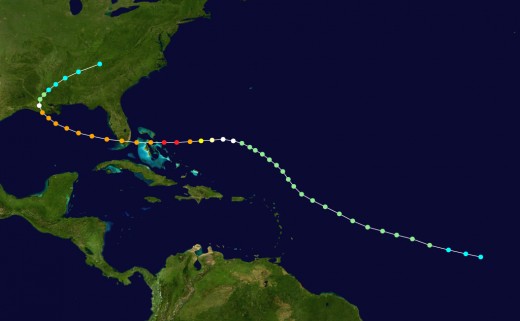
Hurricane Andrew damage
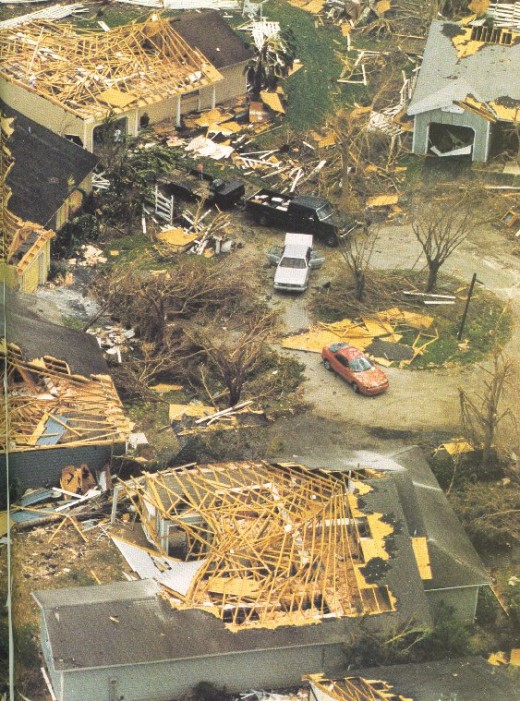
Hurricane Damage for Hurricane Andrew
The Bahamas were hit by Hurricane Andrew while the hurricane storm was still at a category 5 intensity. Massive flooding was caused by a twenty three foot hurricane storm surge, and six deaths were caused throughout the area. Total hurricane damages are estimated at two hundred fifty million dollars US.
In Florida, looting occurred with more than one hundred people ransacking the Cutler Ridge Mall just south of Miami. The deployment of six hundred National Guard troops managed to quickly restore order.
One hundred seventeen thousand homes were destroyed or suffered major hurricane damage, and agricultural losses were estimated at one point four billion, with total hurricane damages throughout the US reaching forty point seven billion dollars.
The total casualties for the hurricane storm reached twenty six killed directly by Hurricane Andrew, and thirty nine killed indirectly.
Recommended Reading
Hurricane Relief and Hurricane Response for Hurricane Andrew
The response from the federal government was criticized as being very slow in southern Florida, leading the DadeCounty emergency management director Kate Hale to famously exclaim “Where in the hell is the cavalry on this one? They keep saying we’re going to get supplies, for God’s sake, where are they?” during a televised conference.
This prompted George HW Bush to declare “Help is on the way”, and help immediately began pouring in in the form of mobile kitchens and tents, as well as units from the 82nd Airborne Division.
Hurricane Andrew Aftermath and Hurricane Recovery
Eleven insurance agencies closed their doors as a result of the record insurance claims filed right after the hurricane storm, with excessive equity being drained from thirty more. Around one million residences were then deemed ineligible for coverage by any insurance agency, prompting the Florida Legislature to create new agencies, the Joint Underwriting Association, the Florida Windstorm Underwriting Association, and the Florida Hurricane Catastrophe Fund, in order to restore insurance coverage to those ineligible for private insurance.
After Hurricane Andrew

Other hubs on hurricanes (Not part of the World's Worst Hurricanes series)
- Video: Hurricanes, Cyclones and Typhoons
Hurricanes, cyclones and typhoons will in best of situations pick on thousands of the best fish in the oceans and feed the masses of people inland. Hurricanes, cyclones and typhoons are always shy of the... - Hurricane Supply Checklist
So you've done everything you could to protect your home and windows during a hurricane. Now you should focus on hurricane supplies. Most experts suggest you have anywhere from three to seven days worth... - Hurricane Preparedness--Protect your windows
You need to protect your windows during a hurricane for a couple of reasons. The first and most obvious is rain can get into your house through a broken window. Wind and debris can also make their way... - Hurricane Shutters:Which are Right for You?
Hurricane shutters protect your windows by shutting out debris. They also help to stabilize and protect your entire home during a hurricane. The shutters will help to keep water and high winds from damaging... - Galveston Oh Galveston! The Hurricane Ike Cover-Up
As an avid follower of world events and hurricanes the last few years, I watched and followed Hurricane Ike very closely these last couple weeks. I followed Hurricane Ike as it formed in the Atlantic,...
This hub brought to you...
by Julie-Ann Amos, professional writer, and owner of international writing agency www.ExquisiteWriting.com
Why not create your own HubPages? It's fun and you can make revenue from Adsense and other revenue streams on your pages. JOIN HUBPAGES NOW - SIMPLY CLICK HERE... (or contact me to write one for you!)
This work is licenced under the Creative Commons Attribution-Non-Commercial-No Derivative Works 3.0 Unported License. To view a copy of this licence, visit http://creativecommons.org/licenses/by-nc-nd/3.0/ or send a letter to CreativeCommons, 171 Second Street, Suite 300, San Francisco, California94105, USA.


